We have a few different kinds of colorants, because we know our community makes a few different kinds of projects. We want to make sure we have the best and most useful products for our crafters, and that means having colorants that work well in soap, candles, bath bombs, and more. But having a variety of options can be confusing. If you’re wondering which colorant you should use in your project, you’ve come to the right place. We’re going to list out each type of colorant, how to use them, and what projects they work best for.
Dyes for DIY candles
As indicated by the name, our Candle Dyes are your best bet for adding color to candles. They come in flakes, so they’re easy to measure out and add to your melted wax, and they can achieve hues from pastel to vivid depending on how much you add.
Some people may encourage you to use off-label products for coloring candles, like crayons or food coloring, but these have notable disadvantages. Crayons are colored with pigments, so they can clog the wick as the candle burns, causing it to burn inefficiently or even to self-extinguish. They can also negatively impact the look and texture of your finished candle. Food coloring and other water-based dyes won’t incorporate into the wax, so they’ll pool up instead of coloring your candles.
Powdered colorants like micas, pigments, clays, and vegetable colorants can settle to the bottom of your candle, and also clog your wicks. For coloring candles, our candle dye flakes can’t be beat. Check out our range of colors.
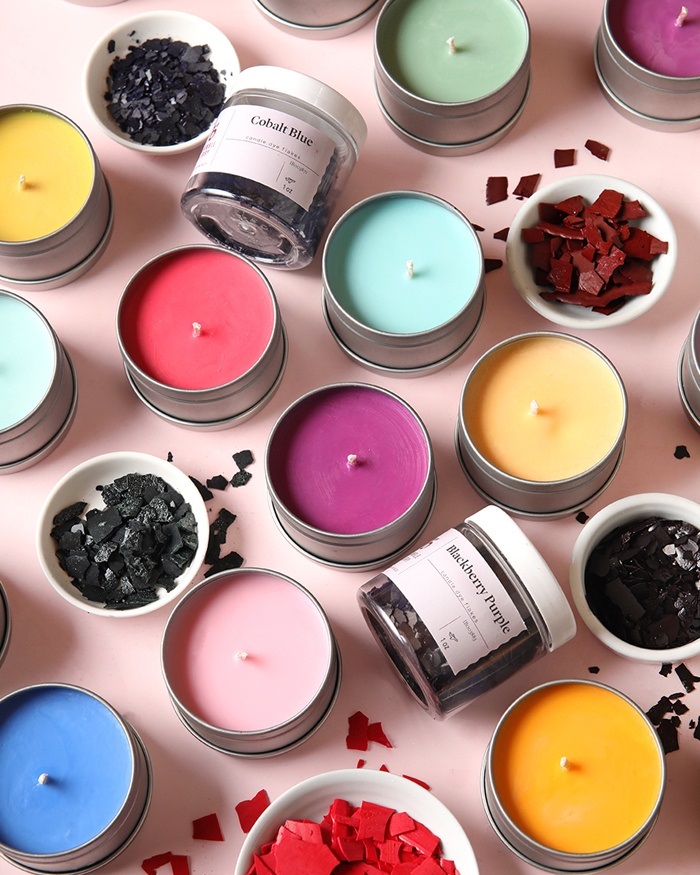
Color for melt and pour soap
One of our favorite colorants for melt and pour soap is our Color Blocks. These blocks are pieces of melt and pour soap with micas mixed in. We make them in-house. These colors are concentrated, and they’re easy to add to melt and pour soap; just put a little in when you’re melting the soap base. This avoids streaks and spots of unincorporated color in your finished soap. Also, the color won’t change while the soap cools, so what you see is what you get with color blocks.
Our Lab Color Liquid Dyes also work well with melt and pour soap. They need to be diluted before use, and can then be added to your melted soap base.
Our powdered colorants work great with melt and pour soap. They should be dispersed in 99% isopropyl alcohol or oil before adding to your melted soap base; this helps make sure that the colorants are fully mixed in and there will be no streaks or spots in your finished product. Micas also add a subtle shimmer to your finished soap, which is lovely. Our
EcoGlitter can also be used in melt and pour for a sparkly touch!
Liquid Crystal Dyes are another liquid dye that works well in melt and pour soap. They’re easy to use, and unlike Lab Colors, they don’t need to be diluted first. Just add to your melted soap!
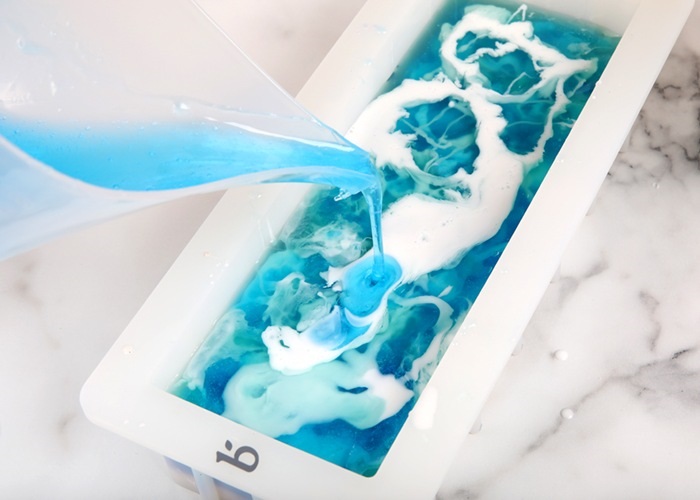
Adding color to cold process soap
Adding color to cold process soap can be a little more complicated. Melt and pour bases have already gone through the saponification process, while cold process soap goes through that process as you make it. This can react with some colorants.
Pigments are great for cold process soap. They’re a colorant that’s naturally occurring, or nature-identical. Nature-identical means that they have the same chemical structure as the mined pigments.
To use pigments in cold process, just mix the pigment with a little lightweight oil and then add them to your soap at trace. Diluting the pigments before adding prevents spots and streaks of color in your finished soap.
Micas are lovely in cold process soap, they have a bit of shimmer to them. Note that some micas may bleed or discolor in cold process soap, so check the testing notes on the product page to make sure your mica will work well in cold process. Adding them to cold process soap is similar to adding pigments; just mix with a lightweight oil and then add at trace.
Lab Color Liquid Dyes are a liquid dye that also works in cold process soap. They need to be diluted with water and a preservative before use, but once that’s done you just add the color at thin trace and mix. Lab colors will work best if your soap goes through gel phase, as the colors will look more vibrant.
Natural colorants work in melt and pour soap as well. You can use plant powders or clays. Keep in mind that our natural colorants tend to create a more muted, natural looking color. For plant powders, it helps to mix them in a lightweight oil before adding them at trace. For clays, mix them with a little distilled water and then add at trace.
Coloring DIY bath bombs
For coloring bath bombs, Liquid Crystal Dyes are great! They were actually designed with bath bombs in mind. No diluting is required, just add to your already mixed ingredients a little at a time until your desired shade is reached. These colors are very concentrated, so a little goes a long way.
Micas are good too, just add them to your dry ingredients and mix well. It’s important to add some polysorbate 80 to keep micas from staining your skin or your tub. You can also use micas to paint on the surface of your completed bath bombs; just mix a little with some 99% isopropyl alcohol and paint on with a paintbrush.
Natural colorants like plant powders, clays, and salts also are great in bath bombs. Just add them to your mix and stir them in well. Clays naturally absorb moisture, so you may need to use a little extra oil or witch hazel to reach the perfect consistency for molding. Clays also may cling to your tub. Polysorbate 80 will help with that, but you may still want to wipe down the inside of your tub after use.
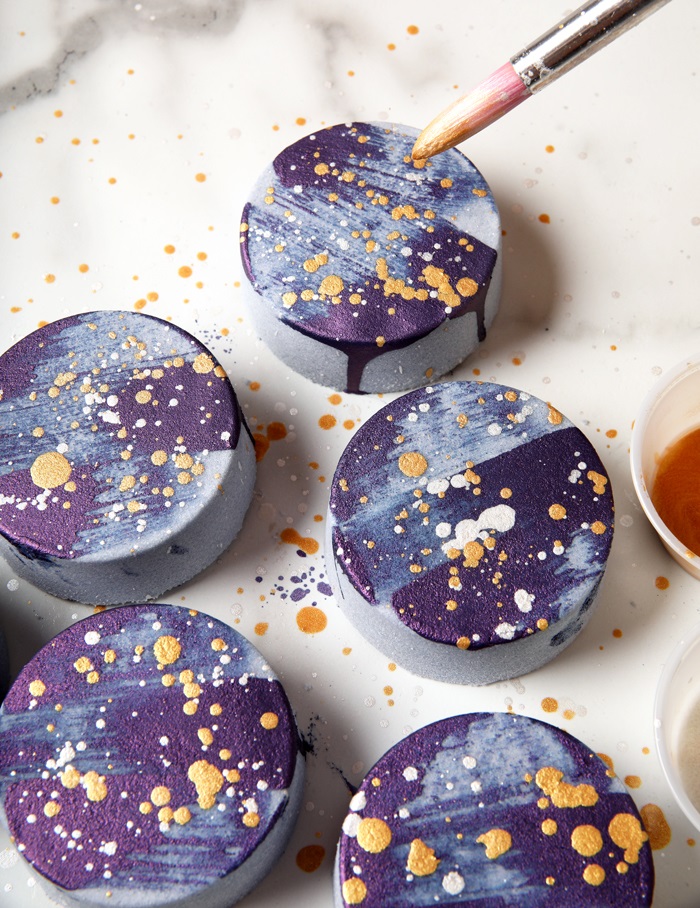
Adding color to homemade lotions and butters
You have a lot of options when choosing color for your homemade lotions. Because lotion is typically an emulsion of a water phase and an oil phase, both water based and oil based colorants will work well. Butters are generally all oils, so you’ll want to use micas and other powdered colorants for butters.
For lotion, you can use our Lab Color Liquid Dyes. Just remember to dilute them in water and add a preservative first. Liquid Crystal Dyes can be added straight to the lotion without diluting.
Micas and other powdered colorants can be mixed right into your lotion, and our EcoGlitter can be added to lotions and butters as well.
It’s fun to add a little extra color.
Natural colors like plant powders are also great. For lotion bars, they’re typically all oils, so you’ll want to avoid water based colorants in these.
Colors for DIY skincare products
Clays are wonderful for coloring skincare products, and in masks they even have benefits for your skin. Natural like vegetable powders can also be used. Just make sure you don’t use a colorant that could clump and clog up your pump bottle!
These natural colorants will give a more muted, natural looking color to your skincare products.
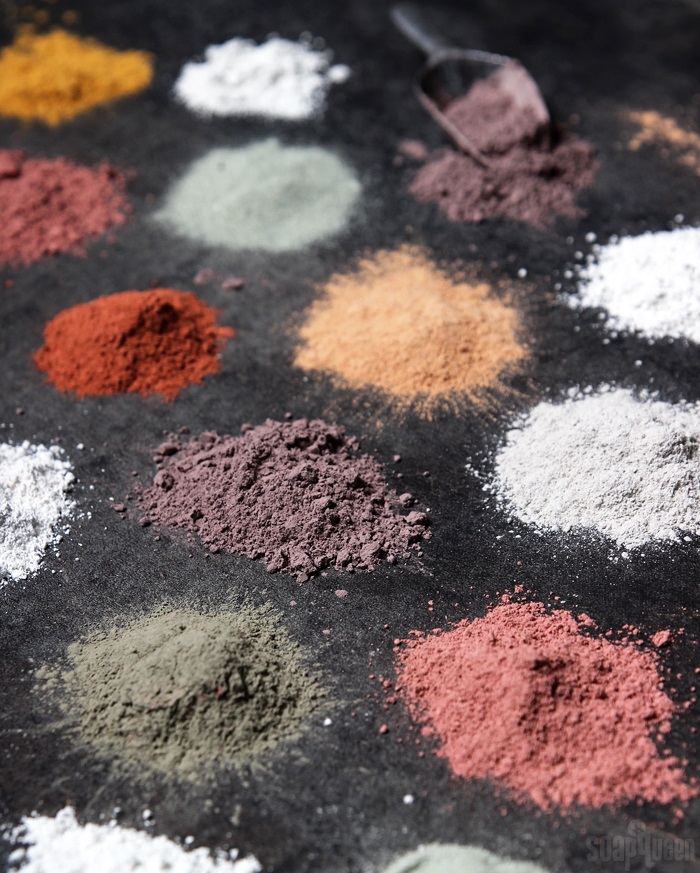
Colors for bath soaks and scrubs
Soaks and scrubs can be more fun with color added. Natural colorants are also great for these products. Clays can even add beneficial properties for your skin, like cleansing and getting rid of excess oil.
Our Liquid Crystal Dyes can also be used in scrubs and soaks. They’re concentrated, so a little goes a long way. Just add a little bit at a time to your bath salts or your body scrub until the desired color is reached.
Some of the salts, botanicals, and exfoliants you add to bath soaks and scrubs also add color! Coffee grounds, sand, and walnut shells all add exfoliation to your scrub and add color too. If you use a colored salt for your bath salts, like pink sea salt, this will bring color to your bath soak as well. Dried flowers and flower petals can as well. These natural colors may be all you need.
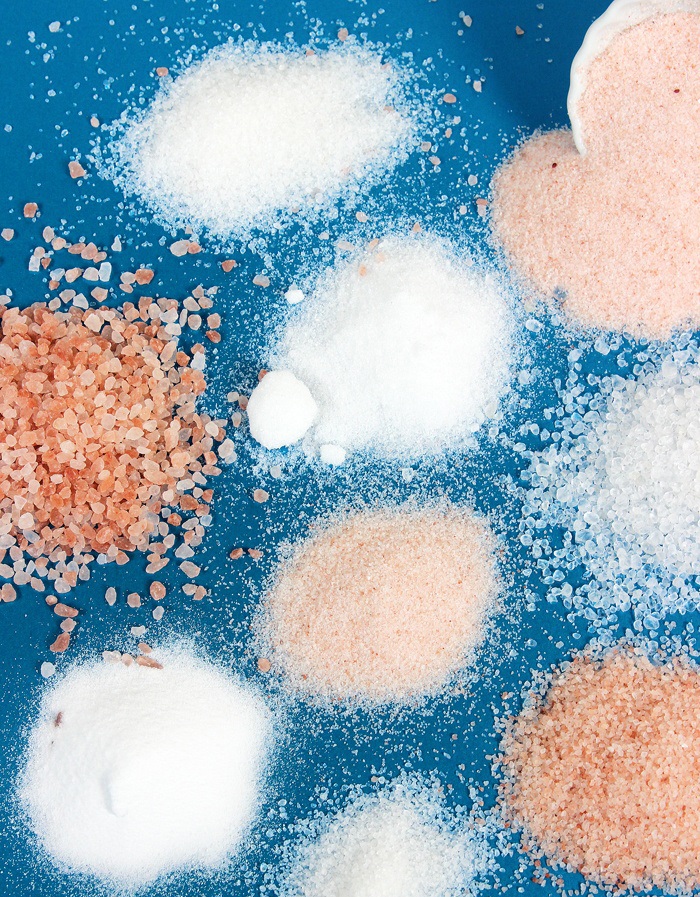
There you have it, a list of different projects and the colorants you need to make them extra beautiful. With this information, you can make beautiful products that turn out well. Knowing which colorants work best for your DIY project will let you focus on your creativity instead of worrying about whether or not the color will impact the quality of your finished product.
For more information about colorants, check out Ask Anne-Marie: All About Colorants.

